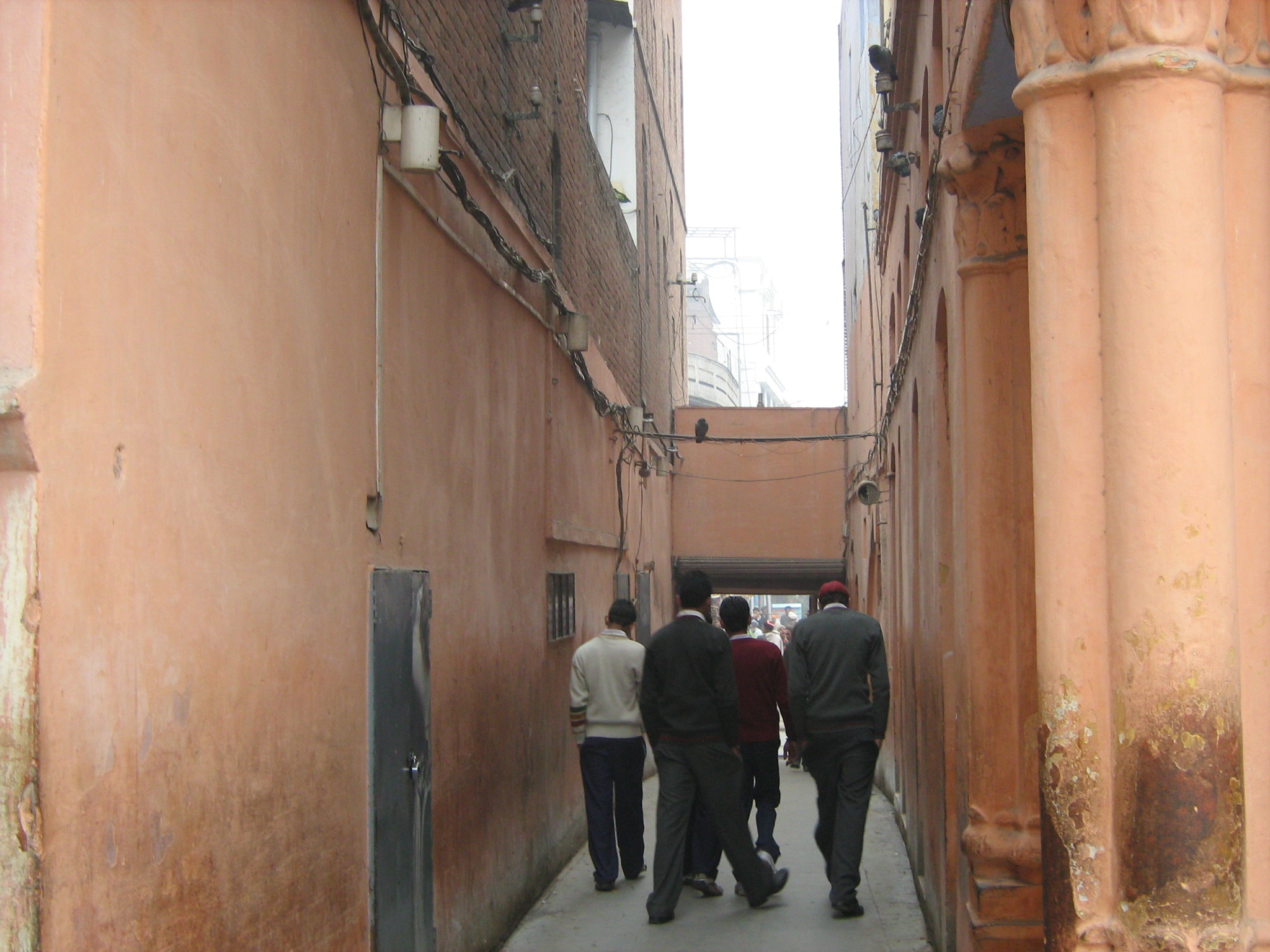 |
| Uno degli stretti vicoli che portano a Jallianwala Bagh |
Gandhi, che aveva lealmente collaborato con la Corona Britannica durante la Guerra, si sentì tradito. Molti indiani non avrebbero voluto aiutare gli inglesi in guerra, ma anzi avrebbero voluto sfruttarne la debolezza per fare passi avanti verso l'indipendenza. Gandhi non volle farlo e collaborò con gli inglesi. Non si aspettava però quel trattamento alla fine del conflitto.
Il Mahatma allora inaugurò la prima grande campagna di non collaborazione e proclamò un hartal, uno sciopero generale. Uffici pubblici, fabbriche, treni, elettricità, negozi, traghetti. L’India si fermò.
Ma gli indiani non erano pronti al sogno non violento di Gandhi. In più parti del subcontinente si verificarono violenze su persone e cose. In seguito il Mahatma parlerà di quella iniziativa come di “un errore himalayano.”
La reazione degli inglesi fu violenta e raggiunse la massima atrocità proprio il 13 aprile 1919 nella città di Amritsar nel Punjab.
Circa 10.000 persone si erano riunite in Jallianwala Bagh, una piazza interamente circondata da edifici se non per cinque stretti passaggi. Si tratta di un assembramento vietato dal Rowlatt Act ed il Generale Reginald Dyer decise di dare una lezione non solo agli indiani di Amristar, ma a tutto il Punjab.
Dyer irruppe nella piazza con 90 soldati. Per fortuna le due autoblindo non poterono entrare in quanto i vicoli di ingresso erano troppo stretti. Senza dare nessun avvertimento né invitare la folla a disperdersi, il Generale ordinò di far fuoco. La strage durò dieci minuti.
Bambini, donne, uomini, anziani, tutti disarmati, si accalcano verso le vie di fuga e divengono un bersaglio facile per i militari.
Vengono sparati 1650 colpi, uccise 379 persone e ferite 1137. Poco più di 100 colpi non colpirono il bersaglio.
Una ferita indelebile rimarrà nei rapporti tra l’invasore britannico e il popolo indiano.